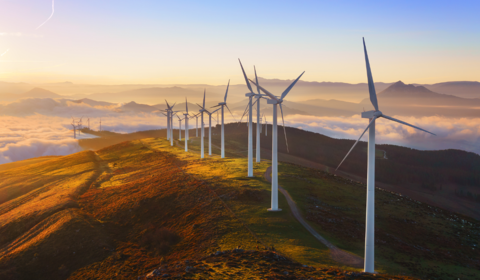
UNLOCKING THE POWER OF WIND IN SOUTH EAST ASIA
8 of ASEAN's 10 member states have shown set a target to achieve net zero by 2050. While each country will have to pursue the best policies for their own targets, it’s clear that the countries are committed to energy transition.
We spoke to Paul Trevillyan, Global Onshore Wind Director, who shared his thoughts on the wind power market in South East Asia and what to expect on the energy transition front as we redefine energy to power tomorrow.
Interviewer: What are some of the foreseeable trends in the wind industry?
Paul: I think there’s a lot of discussion around offshore (wind) and there’s a lot of excitement around offshore wind. But specifically, I think that onshore wind is ready to go. Onshore wind is set up. Onshore wind is much more mature. So, I think that in the short term trend, I really see that onshore wind will take a much bigger role while we’re waiting for the offshore wind to come through.
Interviewer: What are the challenges faced by the wind industry in South East Asia?
Paul: In South East Asia, the challenges, besides the really obvious policy challenges that are coming through... I think that the major challenges in South East Asia are always going to be around safety and around quality. I think as we’re building wind farms in this region, those two issues are ones that we really need to focus on as an industry to ensure that the wind farms that we’re building today are still running for a very long time in the future. And so, that’s really around the quality of those buildings and the quality of the wind farms being built.
Interviewer: What are some of the ways to overcome these challenges in South East Asia?
Paul: I think that (for) the solutions to overcome challenges in South East Asia... one of the most important things is to get a really experienced and knowledgeable owner’s engineer. The owner’s engineering role is to be able to go through and ensure that all of the risks in building a wind farm and ensuring that the operations and maintenance go along smoothly... it is just essential. And I think getting an owner’s engineer and bringing them into the project very early and ensuring that they’re all the way through, including the contract negotiation, and that they’re there on site and to be able to make sure the quality is up to standard and make sure that once we get to that point where we turn these turbines on that they are running as best as they can.
Watch the interview below:
Global Onshore Wind Director
Bureau Veritas
Onshore wind will play a crucial role in South East Asia due to its maturity, readiness, and cost-effectiveness, thus providing a reliable and sustainable source of energy.
